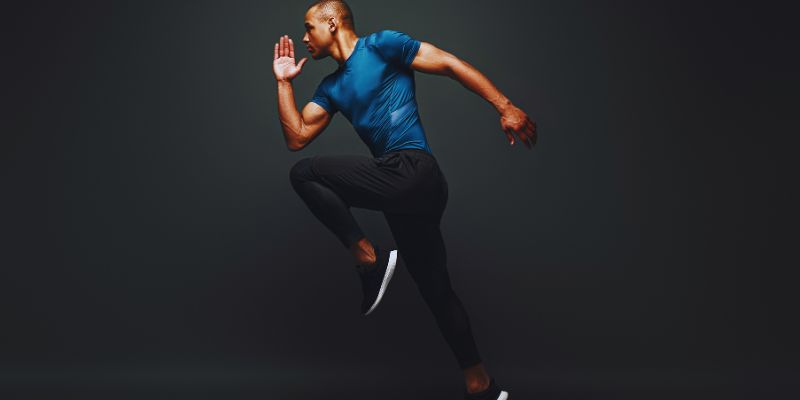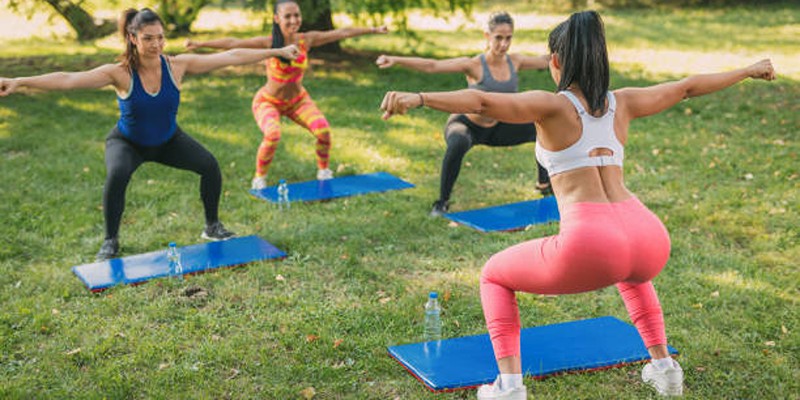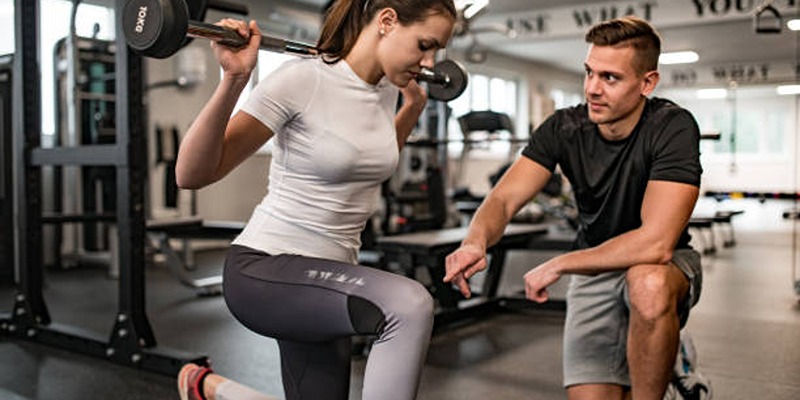Runners seeking to increase speed, stability, and endurance should not ignore their hips. As the powerhouse of your stride, your hips support your legs and allow smooth movement. Weak or tight hips can result in poor form, slower times, and injuries. The encouraging news is that easy workouts will help you correct this. Strengthening your hips helps you run with more control and improves balance and power.
Hip workouts affect everything, regardless of your level of experience running. Though they take little time, their effects persist. Regular practice can help you to notice fewer aches, stronger muscles, and more effective runs. Easy, quick workouts targeted at your hips below will improve your running performance. Let's begin and power up your stride.

Power Your Stride: Hip Exercises to Improve Your Running
Below are simple and effective hip exercises every runner should try to build strength, balance, and running performance.
Do Hip Bridges Daily
One excellent approach to wake your hips and glutes is with hip bridges. Lay down on your back, feet on the floor, and knees bent. Gradually raise your hips until your body runs straight from shoulders to knees. At the top, squeeze your glutes; then, gently lower down. Move this ten to fifteen times for two or three sets. Hip bridges assist the muscles driving your run and aid in the correct posture. Daily activities help to strengthen hips and lower injury chances.
Try Clamshells for Outer Hip Strength
Working the outer hip muscles is best done using clam shells. Lay on your side, feet together and knees bent. Keep your feet touching, and raise your top knee gently like opening a clamshell. Stop at the top, then go gently back—two sets of fifteen repetitions per side. For an added challenge, you might include a resistance band. This move targets weak glute muscles that are often neglected. Strong outside hips lower stress on your knees and ankles and help you keep balanced during runs.
Add Side Leg Raises to Your Routine
Though basic, side leg lifts have a great impact. Stand tall and straight, with one leg out to the side. Straighten your body; stay away from slinking or twisting. Lower your leg slowly and repeat. Two or three sets should consist of ten to twelve repetitions of each leg. This drill increases your thigh's and outer hip's strength. It advances your step control and balance. You may add a resistance band or light ankle weights to challenge it.
Include Lunges in Your Workouts
For an increase in your hips and legs, lunges are quite effective. Step forward with one leg from your standing position. Lower until both of your knees line up at ninety degrees. Reiterating standing, push into your front heel. Two sets of alternate legs with ten to twelve repetitions on each side. Lunges simultaneously train your hip stabilizers, glutes, and thighs. They also sharpen balance and coordination. Regular lunges will assist you in avoiding overloading any one muscle area and enable you to push off with greater strength with every stride.
Do Fire Hydrants for Hip Activation
A good and interesting hip exercise is fire hydrants. Get on all fours, knees under your hips, and hands under your shoulders. Like a dog at a fire hydrant, raise one knee to the side. Maintaining a level hip, bend your knee. Lower it gradually, then repeat 15 times on each side. Perform two or three sets. This action increases hip mobility and works your glutes. Fire hydrants keep runners steady during quick turns, difficult terrain, or uneven ground.
Strengthen With Side Planks
Side planks simultaneously target hip muscles and your core. Lie on your side and support yourself with your elbow beneath your shoulder. Lift your hips till your body runs in a straight line. Spend 20 to 30 seconds holding, then flip sides. Two to three rounds is it. Side planks strengthen your core and support proper hip movement. Holding the plank, elevate your upper leg to challenge yourself. This action allows you to keep good running form and lessens stride wobbling.

Stretch After Every Run
Maintaining hips flexible and free from pain depends on stretching. Stretch for five to ten minutes following every run. Pay especially attention to your inner thighs, glutes, and hip flexors. Try stretches such as the butterfly posture, lunging hip flexor stretch, or pigeon stance. Hold each for 30 seconds without bouncing. Stretching eases tension built up during your run. It increases healing and blood flow as well. Longer, more fluid strides are made possible by flexible hips. Stretching after a run should become second nature to help avoid tightness and future damage.
Use Resistance Bands for Extra Strength
Little, reasonably priced, and user-friendly resistance bands abound. Include them in hip exercises such as leg lifts, fire hydrants, or clamshells. They fast engage your muscles and raise their intensity. Without using hefty weights, bands make your muscles work harder. You can practice at the park or home or tote them wherever. Including resistance helps your hips develop endurance. Long runs will provide you with improved balance and control from this.
Focus on Single-Leg Movements
Exercises with single legs hone your coordination, control, and balance. Try single-leg deadlifts, step-ups, or bridges. These actions target the hips' stabilizing muscles. One leg at a time, they also replicate your running body motion. For two sets, do 10 to 12 repetitions on each leg. These drills correct leg strength disparities. They improve running efficiency and reduce stress on joints. Your stride grows more consistent and under control with time. Strong, balanced hips translate into fewer injuries and more seamless performance.
Conclusion:
Faster running depends on strong hips. With every step, they provide you with support, power, and balance. Completing these easy workouts helps you to develop form, reduce injuries, and enable better runs. Every movement—bridges, clamshells, planks— stimulates key muscles that keep you strong and consistent. To further increase outcomes, include resistance bands, single-leg drills, and stretches. Like running itself, make hip training a regular component of your schedule. The effort may be small, but the results are powerful. Keep constant; your hips will thank you with improved performance every run.












